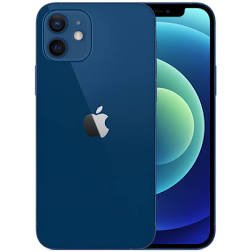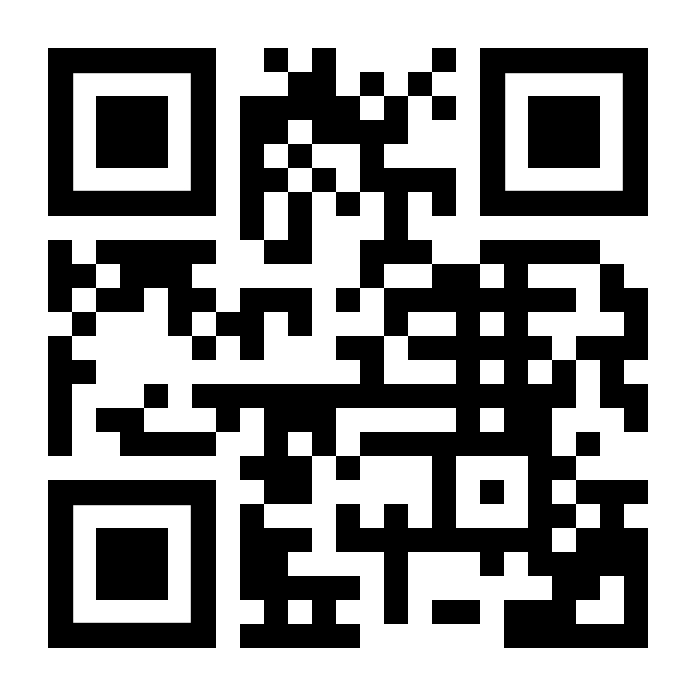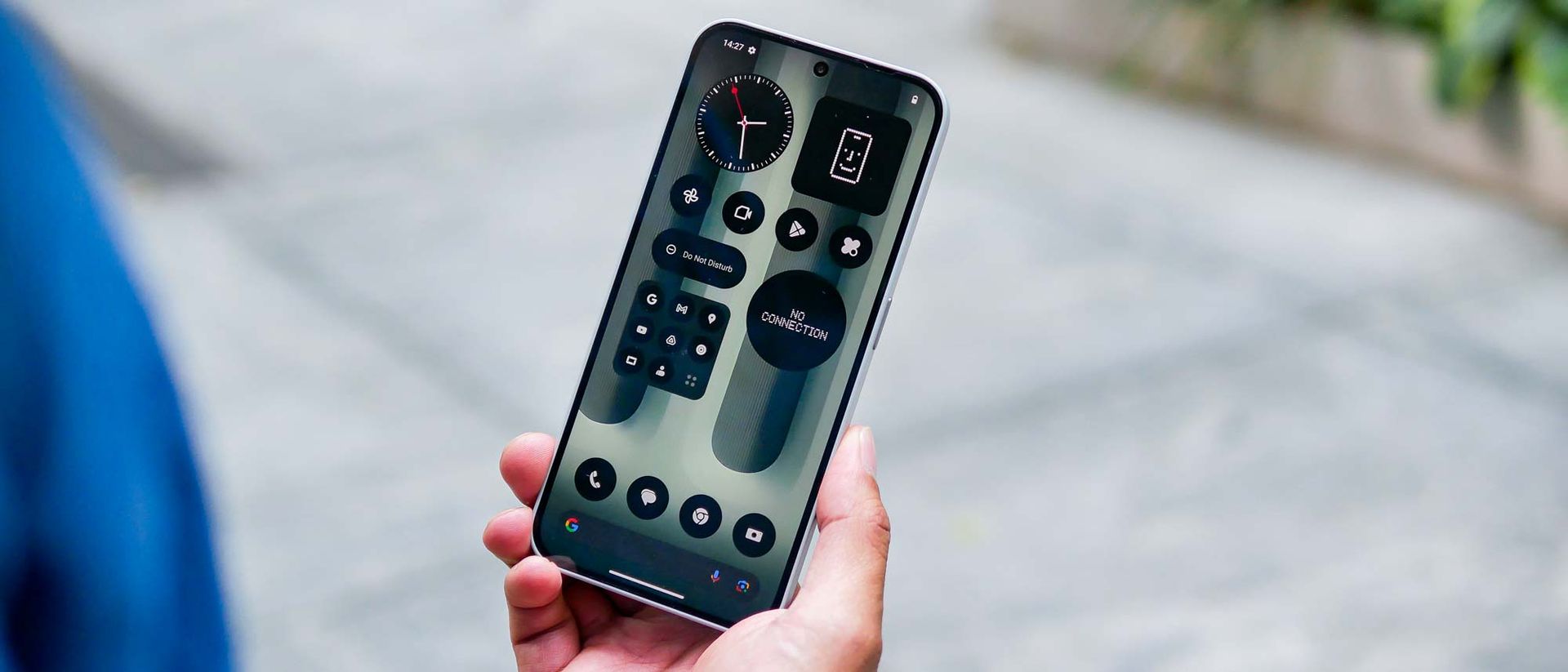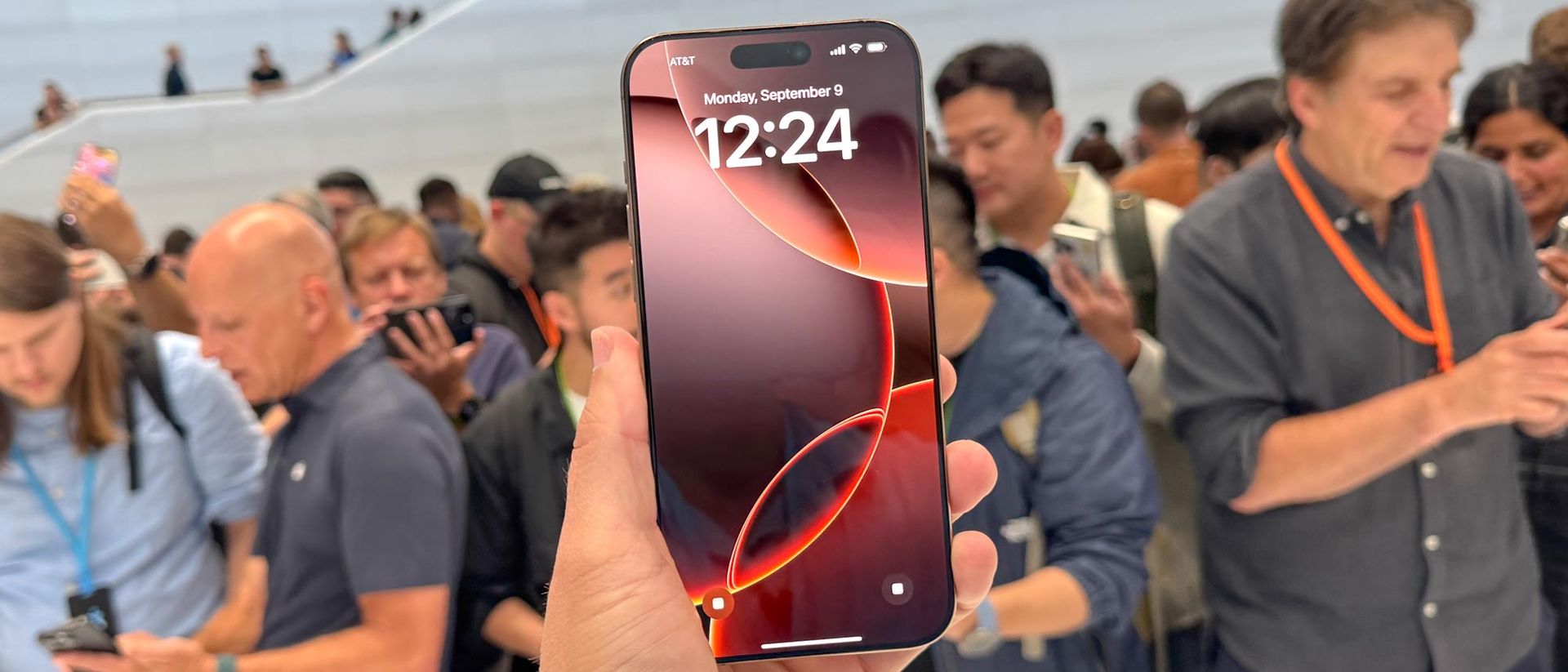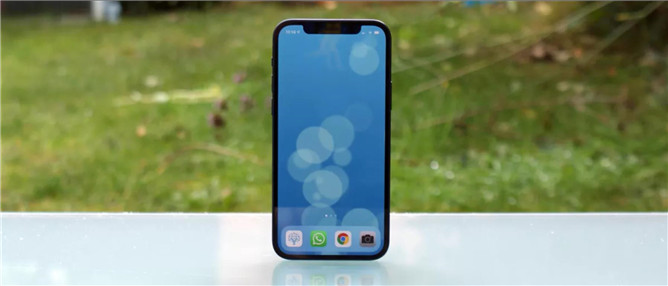
Two-minute review
The iPhone 12 is a more expensive phone than last year’s iPhone 11, with Apple adding $100 / £100 to the price; it does, however, bring a number of new features in the shape of an OLED display, a slightly upgraded camera, a new design and – the big hitters – 5G and MagSafe connectivity.
Starting with the headliners, 5G brings faster speeds and more robust connectivity to the new iPhone 12, but as 5G networks aren’t yet fully deployed around the world, coverage is still a bit patchy. When it works, it’s incredibly fast – we easily managed 200Mpbs on the go – but there are still too many places, even in big cities, where it’s hard to get full coverage.
That said, given that many are holding onto their phones for three or four years nowadays, this is a feature that will only become more useful over time – the iPhone 12 can connect to a huge range of 5G frequencies too, meaning that if there’s a 5G signal where you are you should be able to connect to it.
The new (to iPhones) MagSafe connector on the rear of the iPhone 12 is a really interesting proposition – this magnetic connection tech not only enables you to attach things to your phone, such as a charger or a case, but can also tell what’s been connected through a special chip.
MagSafe enables faster and more accurate charging, and brings with it a new range of accessories (like a wallet clip-on) but, just as 5G will become more useful over time, we’re pretty certain that the MagSafe accessory range is going to improve massively as third-party manufacturers get their hands on the technology.
That means we could see some cool clip-on accessories like games controllers, photo printers and huge extra batteries coming soon.
The performance of the iPhone 12 has been upgraded once again: the A14 Bionic chipset is the most powerful in any smartphone, and the benchmarks bear that out as it annihilates the competition – and weirdly, doesn’t get outperformed by the theoretically more powerful iPhone 12 Pro.
The decision to start with 64GB inside is stingy though, and you might start butting up against that barrier in the not-too-distant future if you like taking photos and videos at full resolution.
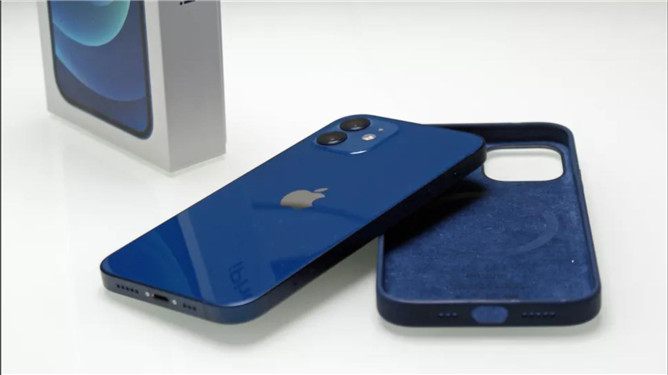
The iPhone 12 design has been tweaked, with squared-off edges that are highly reminiscent of the iPhone 4 and iPhone 5 from yesteryear, and a new Ceramic Shield front that’s apparently four times harder to shatter than the iPhone 11 (not that we were willing to drop-test our early review sample).
The display has been upgraded too: it’s now an OLED screen, the same tech that’s used on the iPhone 12 Pro, and offers rich colors and deep blacks, as well as bringing true HDR to the mix for compatible content. It sounds like a small thing, but perhaps the slick 120Hz display tech would have been a boon here too; however, you are still getting a sharp and colorful viewing experience on the iPhone 12.
Cameras-wise, you’re again getting the 12MP duo of the wide and ultra-wide cameras here. The former is even better in low-light this year, and both can now be used with Night Mode. This feature can improve your snaps in a way that’s genuinely staggering; however, it’s also available on the iPhone 11, and we would have liked to have seen it upgraded in 2020.
The video capabilities, including the ability to record in Dolby Vision in 4K, sound impressive, but for most this will be a rarely-used feature. That said, the output is strong to look at and something you’d be keen to share.
Battery life is only average on the new iPhone 12; with heavier use your phone should see you through most of a day – around 17-18 hours at a push. Lighter usage will see you easily sail through to the night, but it’s not quite as good as last year’s model.
The iPhone 12 feels like it’s packed with potential – but Apple is relying on others to make it a success to a large extent. We need to see wider deployment of 5G, and others need to get on board with MagSafe accessories quickly, to really make the new phone an appealing buy. Those things aside, and while the upgrades to the display and design are nifty, the iPhone 12 doesn’t feel massively different to the iPhone 11– and doesn’t feel like it outperforms its higher price tag in the same way that phone did.
iPhone 12 release date and price
- iPhone 12 is out now around the world
- Price starts at $799 / £799 / AU$1,349
- iPhone 12 mini to come on November 13
The iPhone 12 release date was October 23, so the phone is now out and you’re able to buy it directly from Apple as well as a variety of retailers. However, you won’t be able to pre-order the iPhone 12 mini until November 6, and that phone will be out on November 13.
The iPhone 12 price starts at $799 / £799 / AU$1,349, which is $100 / £70 / AU$150 more than the iPhone 11 range. That’s likely due in part to the cost of adding in a 5G modem, but also because the iPhone 12 mini is grabbing that iPhone 11 price point, starting from $699 / £699 / AU$1,199.
Remember too that you’re only getting the 64GB version of the phone at that starting price, and that’s pretty stingy as a base level of storage in 2020.
In the US, you’ll be able to get the device on AT&T, Sprint, T-Mobile and Verizon. Note that, in the US, the $799 price is only when you buy the phone SIM-free from those networks – if you want to just buy it unlocked, it’ll cost an extra $30.
Those in the UK are able to buy from EE, Vodafone, O2, Three and a variety of other networks. In Australia, Vodafone, Optus and Telstra all stock the iPhone 12.
- These are the best iPhone 12 deals right now
Design
- Revamped design that feels reminiscent of the iPhone 4
- New Ceramic Shield should ensure the phone is stronger
- IP68 water and dust resistant, so it’s built to withstand water
What does ‘elevated’ mean to you? If one were to say, the design of something is elevated, would that mean the sides of it were now flat and more ‘industrial’-looking?
Well, if your answer is yes, then you already get the design ethos behind the new iPhone 12. While it’s similar in size and shape to 2019’s iPhone 11 (and actually a few millimeters shorter and thinner), the main difference is to those edges, which are a sharp 90-degree angle rather than the convex, curved sides of the previous iteration.
The iPhone 12 feels sharper to hold in the hand as a result, with the edges of the phone not resting as snugly in your palms, and we certainly wouldn’t call it comfortable after a couple of weeks of using it.
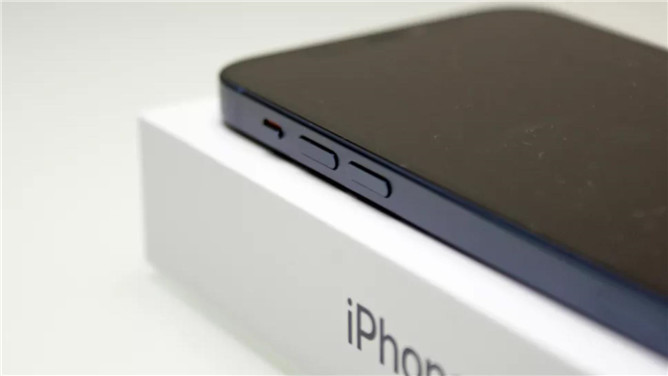
If you’ve had iPhones for a fair few years you’ll instantly be reminded of the feeling of using an iPhone 4 or 5, both of which had similarly squared sides, but the larger phone does push it into the hands a touch more.
It’s an interesting design change from Apple, and one wonders if it’s been done to enable a stronger 5G signal (there is a small gap for the mmWave version in the US).
It’s also designed to make the rear of the phone twice as likely to survive a drop, even though it’s using the same glass as on the iPhone 11.
The front of the iPhone 12 features a new Ceramic Shield to further protect it from shattering, with Apple claiming it’s four times less likely to break in a drop, so Apple is going big on durability this year.
A number of drop tests have emerged from around the web testing this new idea, and most show what you might expect: the front glass is stronger than the rear (which appears to crack first when dropped from around head height) and the front screen does indeed seem to be more durable.
We haven’t performed any drop tests on our units – mostly because we need them to keep reviewing throughout the year – but it seems clear there’s an improvement with the new material on the front of the iPhone 12.
None of the above means you can now do without a case or screen protector, as the iPhone 12 isn’t claimed to be unbreakable or unscratchable. Four times less likely to shatter means it can still crack from the ‘right’ (or repeated) drop, and the front display can still get scratched over time if you place it with sharp objects in a pocket, as we found with the iPhone 12 Pro – so if you want to keep your iPhone safe and looking pristine, put a case and/or screen protector on it.
If you’re someone who likes the feel of a ‘naked’ phone, then you’re still going to be running the risk of breakages, albeit a reduced one.
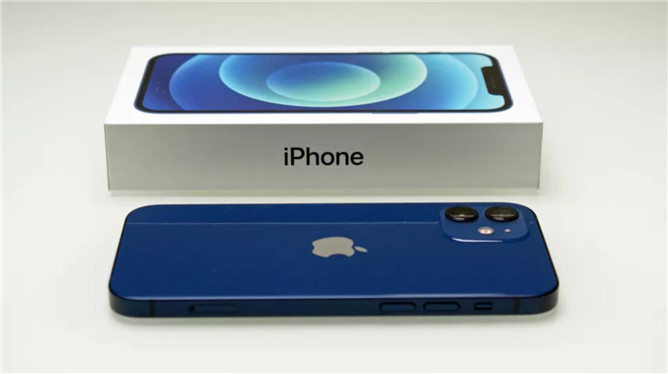
The IP68 rating has been enhanced in 2020, allowing the iPhone 12 to be submerged down to six meters for 30 minutes before things start to get wet inside – more realistically, this means that general, day-to-day water damage is less likely to occur.
One of the most contentious changes with the iPhone 12 doesn’t revolve around the phone itself, but what comes with it. The charging block and EarPods have been omitted from the box, with Apple highlighting the environmental benefits of not cluttering the drawers of millions of people around the world with things they already have (as well as the shipping efficiencies resulting from the boxes being slimmer).
“As part of our efforts to reach our environmental goals, iPhone 12 and iPhone 12 mini do not include a power adapter or EarPods. Please use your current Apple power adapter and headphones or purchase these accessories separately.”
This is what’s listed on the new iPhone page – and it would make sense, save for the ‘current’ Apple power adapter.
As Apple is including a Lightning to USB-C cable, not the Lightning to USB-A connection (USB-A being that ‘stereotypical’ USB connection over the years) the ‘current’ adapter many have won’t be right, so you’ll need to use an old Lightning cable and charger if you buy the new iPhone 12 (which means slower charging) – and if this is your first iPhone, you’ll almost certainly need to pay the extra $19/£19/AU$29 for a charging block you can use.
Display
- A 6.1-inch display that is clear and crisp
- Better quality display than the iPhone 11
The iPhone 12’s display is a big step forward for a phone of this price – while last year Apple decided that fancy, high-contrast OLED displays were only for those willing to shell out for the Pro, this year the Super Retina XDR Display has been brought to the cheaper iPhone 12.
The difference is noticeable, especially when it comes to viewing photos, videos and movies encoded in HDR.
You might not see that much of a difference when just scrolling around the web, but, whether it’s looking at artistic photos on Twitter, sampling HDR content from iTunes or just improving the look of Netflix, the OLED upgrade brings a big jump in image quality.
Day to day it means you’ll have more moments where quality content will really pop out at you. For instance, while many people won’t have access to HDR Netflix on their phone (thanks to it being locked to the most expensive subscription tier) images even in ‘normal’ mode are vibrant, rich and (if you’re viewing the same nature videos we were) startling.
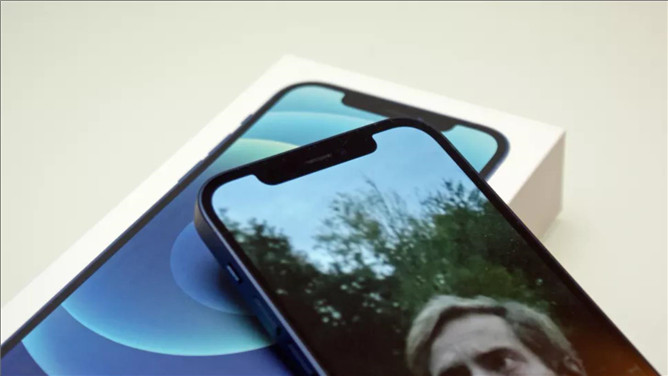
The iPhone 12 has 2532 x 1170 pixel resolution, and the display is sharp and clear and viewable at all angles. The bezels are thinner (although the squared design of the phone means they still look a little thick), and this allows the iPhone 12 to be a little shorter and narrower than 2019’s version, while retaining the 6.1-inch display.
While in the past it’s been easy to criticize Apple for not putting the best display technology in its phones, there’s very little to fault about the new iPhone 12’s screen.
Adding in 120Hz, a faster screen refresh rate that makes for more fluid scrolling on the new iPads, as well as on some Android flagships, would add a level of gloss to interacting with the new iPhone, but otherwise the sharpness, color reproduction and HDR levels look to be pretty good across the board.
According to our testing, the iPhone 12 has a slightly lower brightness than the iPhone 12 Pro – while they’ve got the same peak screen brightness when showing HDR content, the day-to-day view is slightly darker. Well, we rarely noticed much difference at all side by side, but being less bright will offer slightly better battery life over time, and we found everything visible even in bright sunlight.
The only real question we have here is whether you’ll want HDR on a phone screen – yes, the color reproduction and contrast ratios (the difference between the brightest and the darkest points) is excellent, but in HDR mode some detail can get lost in the ‘majesty’ of the display.
This notion is subjective, and minor in terms of how you’ll use the phone – but it’s worth being aware of if you’re enticed by the notion of HDR on a mobile.
5G vs MagSafe – which is the best new feature?
- Future-proof with 5G connectivity
- Although 5G isn’t useful for everyone right now
- New MagSafe tech brings a variety of new accessories and uses
While we’re going to go into the more nuanced upgrades in the new iPhone 12 later in this review, there are two key changes for this year’s model that will likely attract your attention.
The bad news is that neither are likely to feel hugely impressive if you buy the new iPhone close to launch.
The headline feature for the iPhone 12 is that it now supports 5G, and with more compatibility to connect to the speedy 5G networks than many other phones, including the lightning-fast, but limited-range, mmW (millimeter wave) standard in the US… when they’re deployed.
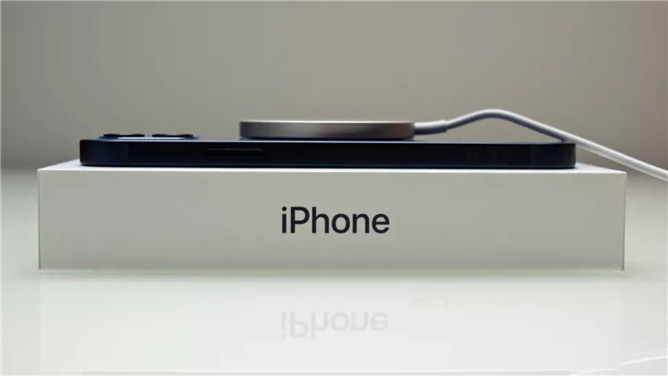
The idea of being able to browse almost instantaneously, download faster and stream in higher quality sounds appealing – but the issue right now is that you can’t access 5G easily outside of large cities – and even then, it’s not complete coverage.
Also, 4G speeds on our current phones are still fast enough for most of us, thanks very much. The experience of streaming Netflix and Spotify is perfectly acceptable, and making things that much faster feels more like a curious luxury than a must-have feature right now. Need for speed? More of a ‘yeah, it’d be alright’ notion for motion.
It’s not easy to add 5G connectivity to a smartphone design – the components are more expensive, and space in the chassis is at a premium.
But while the addition of 5G into the iPhone range might not feel entirely necessary right now, it’s not superfluous by any stretch of the imagination. Firstly, the 5G speeds you can reach when you do make a connection are mind-blowing… we clocked 200Mbps with ease on a train at one point (on the EE network in London, UK), and we downloaded a 110MB audiobook in half a minute, where a 4G connection was struggling at a much lower rate. It’s not blindingly fast (around 30Mbps) but it’s an improvement over 4G.
We also found that coverage of signal is improving – relying on 5G, we were able to send and receive messages on a portion of our regular train journey that previously was a blackspot for all data. Whether that’s thanks to networks increasing their 5G coverage, or the iPhone’s increased band sensitivity, we’re not sure – but the results were good.
If you think the 5G advantage is all about speed though, you’d be wrong. In one test we had one iPhone connected to 4G in central London, and tried to connect to Spotify to stream some music while on a run. Would it connect? Nope.
We switched to 5G on our iPhone 12, and were able to instantly connect and stream without issue. Now, that’s partly because there are fewer people on this nascent network, but also because 5G allows for multiple connections with less slowdown.
So you can imagine that (when it’s allowed) using 5G at a football game or packed concert will see an end to those occasions where you want to use your phone but data just won’t filter through.
But right now we’re still some way away from that – there needs to be a wider deployment of 5G around the world in order for the superfast dream to be truly realized.
MagSafe
While 5G might be the headline spec for many people looking at the new iPhone 12, there’s something else added to 2020’s iPhone that actually has us a little more excited.
We are Tradelectronics, licensed second-hand electronics dealer located in Sydney CBD, experts in trading used laptops, old cameras & lens, and used mobile phones. Fast, Reliable & We Pay More! Get a free quote on your favourite WhatsApp, Facebook, SMS & Email, instant reply!
| Click icon for WhatsApp Quote | Click icon for facebook Quote |
 |
 |
- We are open from Mon – Sat 12pm – 7pm
- Get your free quote from WhatsApp and Messenger are highly recommended, we can guide you through in finding the accurate specs for your laptops, cameras & lens, mobile phones as well. As such we can provide a more precise quote for you.
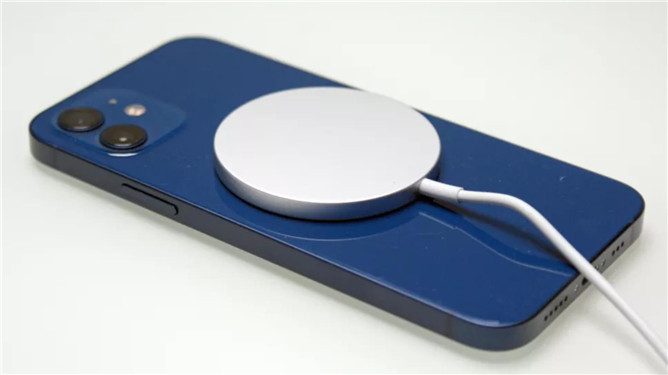
It’s MagSafe, the same magnetic, snap-on technology that Apple has previously used on MacBooks to connect the power adapter. Here, the magnets are arranged in a circle under the rear case of the iPhone, enabling the introduction of a range of new accessories that simply click onto the back of the iPhone 12 handsets.
These MagSafe accessories have a small chip inside them that the iPhone is able to read, so it can register what they’re supposed to do. While at launch this feature is limited to cases and a charger from Apple, these accessories are an upgrade on previous years, and when third parties get involved we could start seeing some real innovation with the iPhone that other brands, with less scale, just couldn’t match.
There have been attempts in the past to bring magnetically-attached accessories to smartphones, notably by Essential and Motorola. Motorola’s Moto Mods, in particular, were hugely impressive – being able to clip a game controller, battery pack, speaker or even 5G modem to your phone was a brilliant idea.
But with Motorola’s phones not seeing the widespread adoption the iPhone enjoys, there wasn’t the takeup from third-party accessory makers that this cool idea deserved, and the feature has been quietly discontinued.
But a look at what was achieved with Moto Mods gives us an idea of what we can hope to see from MagSafe: there was a snap-on games controller, a mini projector, an instant photo printer, and a whole new Hasselblad camera accessory that added a huge sensor to your phone.
If we saw such innovation with the Motorola range, imagine what will happen with a similar system that’s on some of the world’s most popular phones.
At launch though, you’re just getting a MagSafe charger from Apple, as well as some cases and snap-on accessories.
The charger is neat in that it enables 15W fast wireless charging – that’s twice as powerful as on the iPhone 11.
By ensuring that the charger clicks precisely into place (and boy, it clips firmly), with confirmation through the chip that the charger is safe, Apple has upped the power – when wirelessly charging older iPhones we’ve sometimes woken in the morning to find that our wireless charger had slipped a little when we placed our phone on it, and the phone is nearly out of battery, and that’ll be a thing of the past with the iPhone 12 and MagSafe.
The MagSafe cases are a nice idea – the new iPhone can recognize the color of the case placed on it through that chip, and the screen will glow with the same hue. And while these new cases are £10 / $10 more than Apple’s standard cases, they do bring another advantage: you can charge the iPhone 12 through your case.
For many, that will be a huge plus – having to take a case off a phone every night is a hassle, and eventually it can cause you to just leave it off permanently, which reduces the protection for your shiny new phone.
Camera
- Similar tech to 2019’s iPhone 11, but it improves a few aspects
- Rear camera features two 12MP shooters
- Front sensor is a 12MP selfie camera too
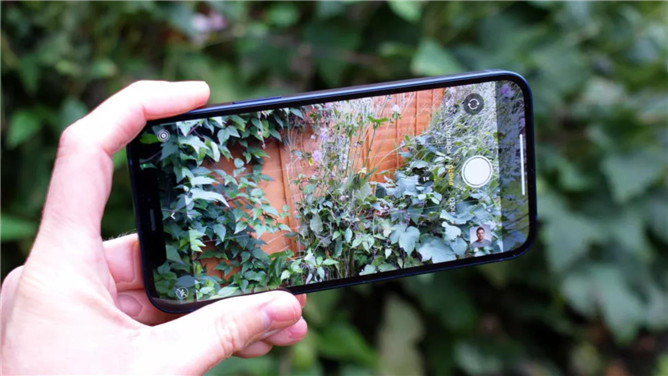
The camera setup on the iPhone 12 doesn’t appear to be much of an upgrade when you just look at the sensors – there’s still the same wide camera (which most would call the regular sensor), and the ultra-wide snapper that allows you to zoom out when you want to get more scenery, or more people, in the frame.
The overall capability of these sensors has been improved though, with the wide 12MP sensor now coupled with an f/1.6 aperture for what Apple says is improved low light photography compared with 2019’s iPhone 11.
The results do bear out the claim – low light performance is improved a touch, for brighter shots with more detail.
The main thing that impressed us with the iPhone 11 last year was Night Mode, and it’s back with the iPhone 12 – plus you can now use it with both the wide and the ultrawide sensor too.
Night Mode can detect when light levels are dropping, and you’ll be prompted to hold your phone still for up to 15 seconds, depending on the conditions, to brighten the photo through computational understanding over the exposure of the image.
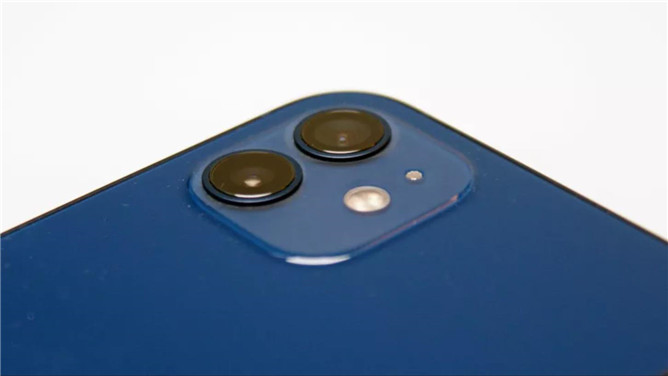
The results are genuinely startling, with shots taken in complete darkness looking as clear as day – literally. You need to get your framing right and keep the camera very still, though; you’ll find that a degree of blur will creep in if you jiggle the camera too much during the exposure.
However, for the most part, and even with a small amount of motion from time to time, Night Mode brings a level of detail to night scenes that you would have scarcely thought possible.
It definitely works best with the ‘main’ wide sensor though – while in our tests while we found that both could capture some shockingly bright images, Night Mode with the ultra-wide sensor produced more ‘muddy’ pics, which makes sense given it’s not as adept at shooting in low light.
While Night Mode can be startling in its ability to brighten an almost pitch-black scene, though, we would have liked to see more of an upgrade this year. Rather than using it on the ultra-wide sensor, making the process speedier and sharpening the results would have been better to see.
Source: TechRadar

